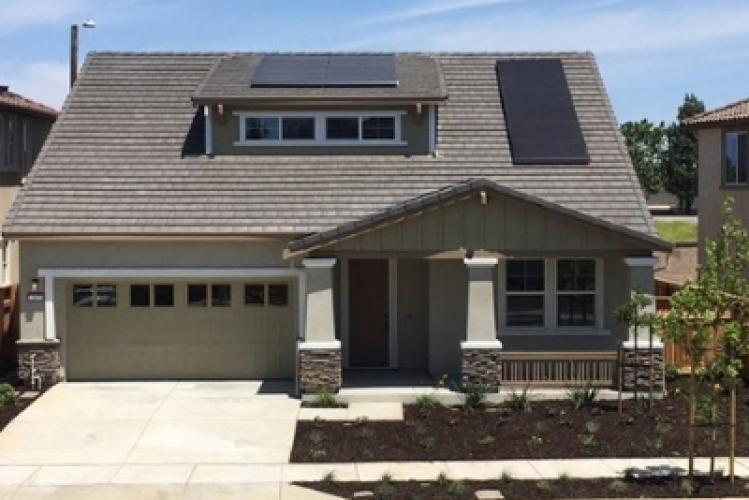
There are many paths to building a highly energy efficient new home, including Passivehaus, Living Building Challenge and the soon-to-be-released ASHRAE 90.2 standard. Policies designed to save energy are also driving up demand for efficient housing. California, for example, will soon require that all new homes be zero net energy.
Given increasing interest for such innovative homes, it’s not hard to imagine a future in which people across the country are able to just pick their favorite energy efficient home from a subdivision full of zero net energy (ZNE) homes.
Enter Pulte, the third largest home builder in the country, and their prototype zero net energy home. Their ZNE prototype is part of the ZNE Production Builder Demonstration pilot being sponsored by Pacific Gas and Electric (PG&E) in response to California’s 2020 requirement. The potential sea change is that this is not a “California only” home; forward-looking Pulte is looking to roll out these energy efficient homes across the nation.
Keys to the (Energy Efficient) Castle
The prototype is a pleasant looking two-story home with a two-car garage and large, welcoming front porch and blends in well the other “standard” homes on the block. But there are plenty of differences.
Key to the design is a building envelope with low air leakage and high thermal performance. In addition to creating a quieter, more comfortable home with improved indoor air quality, the high performance envelope reduces the heating and cooling load, allowing for a smaller, more efficient mechanical system – in this case a 19 SEER, multi-speed heat pump. The second key is reducing the overall electric load. The prototype has all LED lights, ENERGY STAR appliances and high efficiency ventilation fans. Once the building loads are as small as possible, the last step to zero net energy is on-site energy production. The prototype home features a next generation 14-panel (about 250 square foot) solar array capable of producing 4.34 kilowatts.
Looking to the Future
The prototype home will be monitored for a full year after it is sold with the energy consumption and overall performance continually assessed. Lessons learned will then be applied to future ZNE homes, and the implications for utility load balancing and fuel mix assessed.
When one of the largest home builders in the county gets behind ZNE homes, it makes you think that the day may not be far off when a ZNE home no longer needs the acronym – it will simply be what a buyer or renter expects from a home. And that will be a healthy change for everyone.